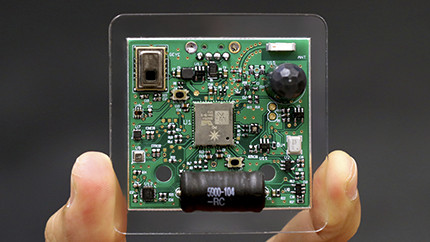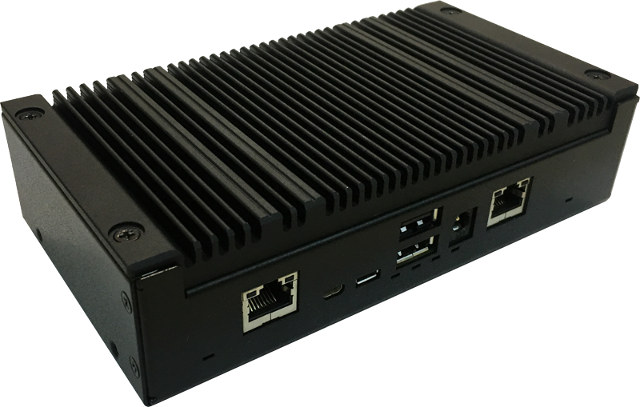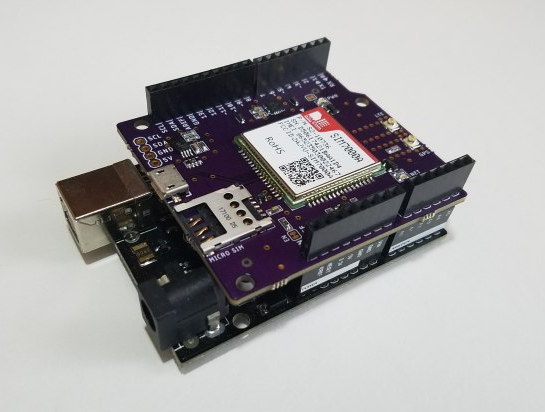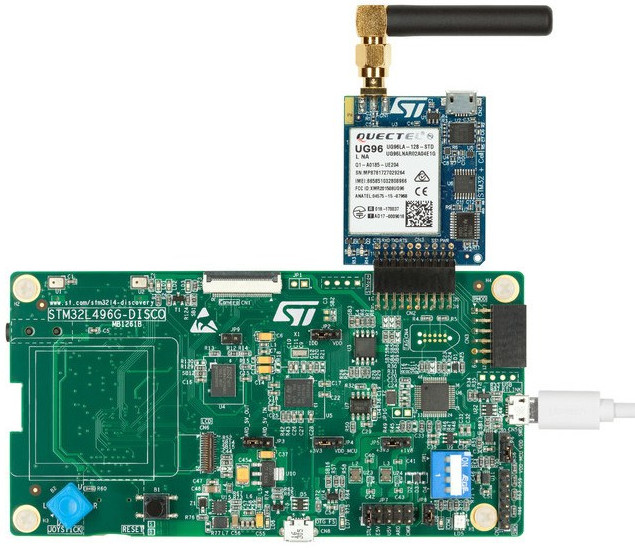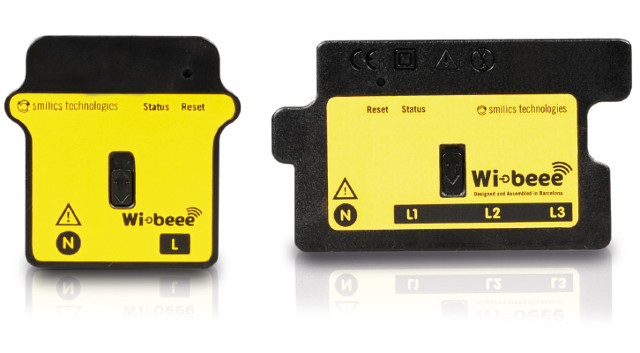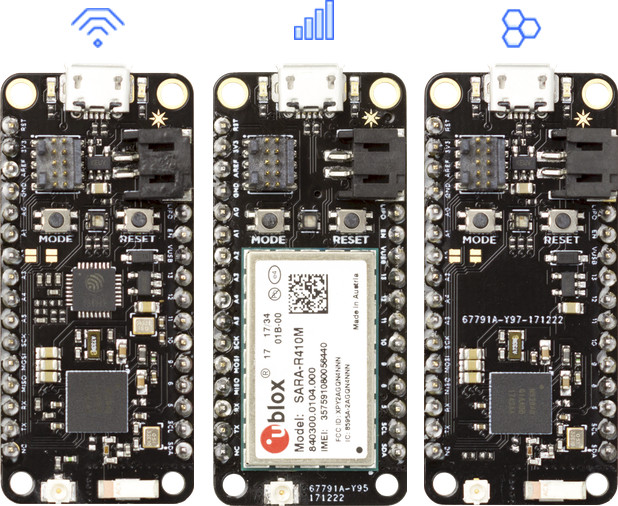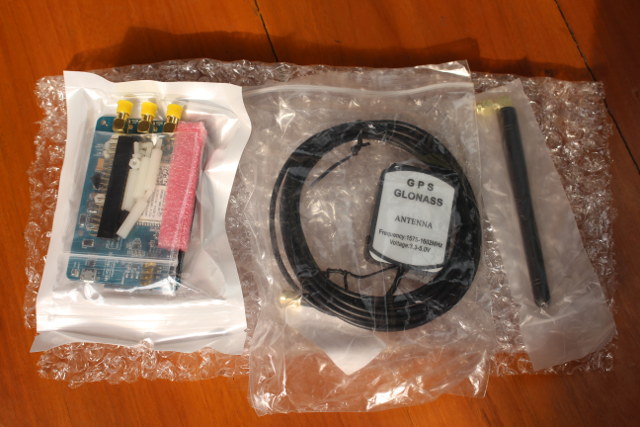Sensors can be used to get specific data for example temperature & humidity or light intensity, or you can combine an array of sensors and leverage sensor fusion to combines data from the sensors to improve accuracy of measurement or detect more complex situation. Gierad Laput, Ph.D. student at Carnegie Mellon University, went a little further with what he (and the others he worked with) call Synthetic Sensors. Their USB powered hardware board includes several sensors, whose data can then be used after training through machine learning algorithms to detect specific events in a room, car, workshop, etc… List of sensors in the above board (at frequency at which data is gathered): PANASONIC GridEye AMG8833 IR thermal camera (10 Hz) TCS34725 color to digital converter (10 Hz) MAG3110F magnetometer (10 Hz) BME280 temperature & humidity sensor, barometer (10 Hz) MPU6500 accelerometer (4 kHz) RSSI data out of 2.4 GHz WiFi […]
Inforce 6320 Snapdragon 410E Powered IoT Edge Gateway Launched for $250
Inforce Computing launched several boards and modules based on Snapdragon 410/410E including 6301 SoM and 6309 micro SBC, which their customers can integrate into their own products. The company has now launched an “Application Ready Platform” with Inforce 6320 IoT/IoE (Internet of Everything) edge routers that can be deployed directly by their customers. Inforce 6320 comes with a Snapdragon 410E board with dual Gigabit Ethernet, a Wireless module with WiFi and Bluetooth, USB 2.0 ports, a micro HDMI port and other interfaces, as well as a rugged metal enclosure also used for cooling.Inforce 6320 IoT gateway specifications: SoC – Qualcomm Snapdragon 410E processor (APQ8016E) with four ARM Cortex-A53 64-bit CPU @1.2GHz, Adreno 306 GPU with support for OpenGL ES 3.0, DirectX, and OpenCL, Hexagon QDSP6 @ 700MHz System Memory and Storage – 1GB LPDDR3 RAM + 8GB eMMC (eMCP package); MicroSD card connector Connectivity 802.11 b/g/n 2.4GHz WiFi, BT 4.1 […]
LTE Cat M and NB-IoT Shield for Arduino Features SIMCom SIM7000-Series Module (Crowdfunding)
We’ve already covered several NB-IoT (and/or LTE Cat M1) Arduino shields with products like RAK Wireless WisLTE, Sixfab Arduino NB-IoT shield, or AIS NB-IoT shield, which all happen to come with Quectel modules. A young self-taught engineer has decided to make his own Arduino eMTC/NB-IoT shield, but based on a SIMCom SIM7000-series module instead of a Quectel one found in the other aforementioned products. Board specifications: Cellular Module (one of the list depending on your location) SIM7000A LTE Cat M1 & NB-IoT module certified for AT&T and Verizon in the US SIM7000C Cat M1/NB-IoT module with 2G/2.5G fallback for the Chinese market SIM7000E Cat M1/NB-IoT module with 2G/2.5G fallback for the European market Note: The developer is also looking into SIM7000G module which should work globally, but the option is not available for now Micro SIM card holder GNSS – GPS/GLONASS with 2.5m accuracy supported by SIMCom modules Antenna – […]
STMicro Introduces Two STM32 Discovery Kits with 2G/3G or 4G LTE-IoT Cat M1/NB1 Connectivity
Embedded World 2018 trade fair will take place on on take place on February 27 – March 1 in Nuremberg, Germany, and we’re starting to see some company announce new products and solutions for the embedded market. STMicro has just announced their showcase their very first cellular development kits at the event, based on a display-less variant on their 32L496GDISCOVERY Discovery board with cellular add-on boards: P-L496G-CELL01 Discovery kit with with a 2G/3G modem P-L496G-CELL02 Discovery kit with with an LTE-IoT Cat M1 (eMTC) / NB1 (NB-IoT) / 2G model Now the company has not started designed their own cellular modem, but instead relying on QUECTEL modems. Both kits share most of the same specifications: MCU – STMicro STM32L496AGI6 Arm Cortex M4F MCU@ 80 MHz with 1 MB Flash, 320 KB RAM in a UFBGA169 package On-board memory – 8 Mbit PSRAM On-board + external storage – 32 KB I2 […]
Wibeee Power Monitoring Device Plugs right into Your Home’s Circuit Breaker Box
We’ve covered several smart plugs or switches capable of monitoring electricity consumption and displaying results right in a smarphone app, or computer’s web browser with products such as Sonoff S31 or Broadlink SP2 WiFi smart sockets, or Sonoff POW switch. Those work for individual plugs, but if you want to cover your full house, you’d need several of those, and in some case it may not be so convenient as no plugs may be available for example for lights or air conditioner. Smilics Technologies has come up with an easier method, although less granular, thanks to their WIBEEE device that clips to your fuse / circuit breaker box using DINZERO “clip-on” technology, and available in single and three phase models. Main features: Voltage Range – 85 to 265 V AC @ 50 ~ 60 Hz with 2% accuracy + variation in range of use depending on temperature, humidity, etc… Current […]
Particle Unveils Three nRF52840 Bluetooth 5 Boards: Argon (WiFi), Boron (LTE), and Xenon, as well as Particle Mesh Technology
In the last year or so, Bluetooth has gotten an upgrade with the release of Bluetooth 5. The new protocol works on several existing platforms, but if you want support for the full set of Bluetooth 5 features such as longer range and higher bandwidth, we’ve seen you need a recent chip such as Nordic Semi nRF52840. However so far, AFAIK you had to buy Nordic Semi own development kit for play with nRF52840, and now Particle has announced not one, but three low cost development boards powered by nRF52840 chip starting at just $9, and supporting their newly announced Particle Mesh technology. So for some reasons, it appears they did not go with Bluetooth Mesh. Particle Xenon – Bluetooth 5 + Mesh Xenon is the cheapest model with the following specifications: SoC – Nordic Semiconductor nRF52840 Arm Cortex-M4F 32-bit processor @ 64MHz with 1MB flash, 256KB RAM Storage – […]
Embedded Linux Conference & IoT Summit 2018 Schedule
The Embedded Linux Conference 2018 and the OpenIoT Summit 2018 will jointly take place next month, on March 12 – 14, 2018 in Portland, Oregon, USA. The former is a “vendor-neutral technical conference for companies and developers using Linux in embedded products”, while the latter is a “technical conference for the developers and architects working on industrial IoT”. The Linux Foundation has already published the schedule, and it’s always useful to learn what will be discussed about even for people who won’t attend. With that in mind, here’s my own virtual schedule with some of the talks I find interesting / relevant to this blog. Monday, March 12 10:50 – 11:40 – Progress in the Embedded GPU Ecosystem by Robert Foss, Collabora Ltd. Ten years ago no one would have expected the embedded GPU ecosystem in Linux to be what it is now. Today, a large number of GPUs have […]
How to Use 3G and GPS on Raspberry Pi with ThaiEasyElec 3G HAT Expansion Board
Venus Supply is an embedded systems company based in Bangkok, Thailand that sells products through their ThaiEasyElec website/brand, as well as a act as a local distributor for popular DIY electronics items. I previously tested their ESPino32 ESP32 board, and the company has now send me another of their new product called “3G HAT Expansion for Raspberry Pi” and based on Quectel UC20-G that support 3G and GPS/GLONASS connectivity globally, meaning it should work in any country with 2G or 3G coverage. After listing the specifications, going through unboxing and assembly with a Raspberry Pi 2/3 board, I’ll write some quick start guide to show what I had to do to use GPS and connect to 3G with a Hologram SIM card. 3G HAT Expansion for Raspberry Pi Specifications Quectel UC20-G wireless module supporting Cellular 3G – UMTS @ 800/850/900/1900/2100 MHz 2G – GSM @ 850/900/1800/1900 MHz Data – HSPA+ […]


